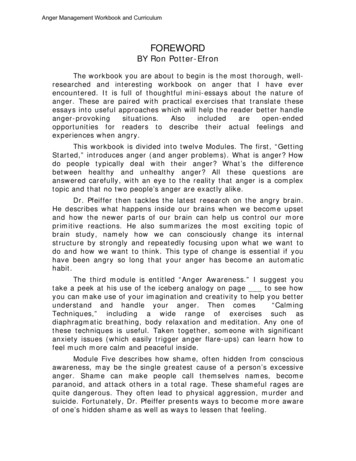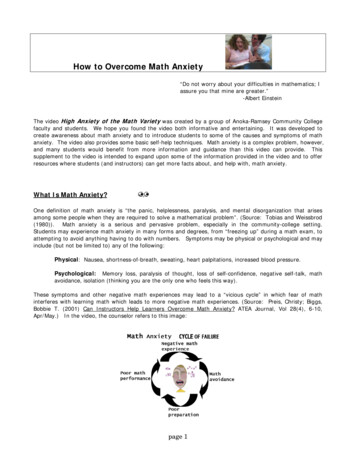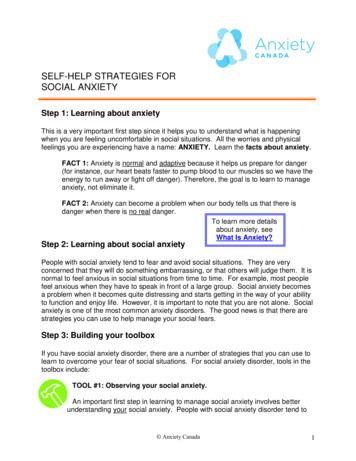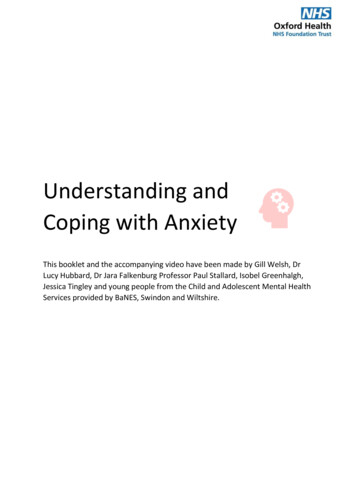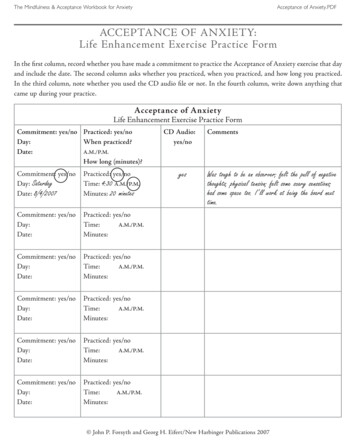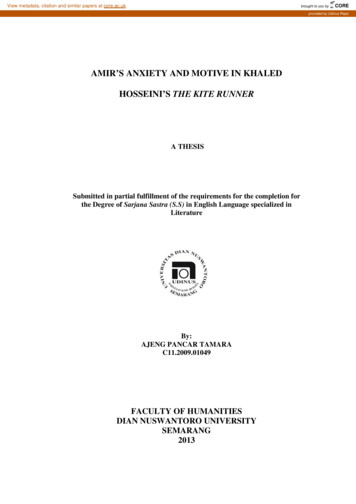
Transcription
View metadata, citation and similar papers at core.ac.ukbrought to you byCOREprovided by Udinus RepoAMIR’S ANXIETY AND MOTIVE IN KHALEDHOSSEINI’S THE KITE RUNNERA THESISSubmitted in partial fulfillment of the requirements for the completion forthe Degree of Sarjana Sastra (S.S) in English Language specialized inLiteratureBy:AJENG PANCAR TAMARAC11.2009.01049FACULTY OF HUMANITIESDIAN NUSWANTORO UNIVERSITYSEMARANG2013
STATEMENT OF ORIGINALITYI certify that this thesis is absolutely my own work. I am completely responsiblefor the content of this thesis. Opinions or findings of others are quoted and citedwith respect to ethical standard.Semarang, October 2013Ajeng Pancar Tamara
MOTTOAll iz well (3 idiots)
DEDICATIONThis thesis is dedicated to:-My beloved parents-My literature lecturers-My University, Dian Nuswantoro University
ACKNOWLEDGEMENTAt this happiest moment, I wish a prayer to my Lord, Allah SWT who hasblessed me during writing this thesis.Furthermore, I would like to express my sincere thanks to:1. Mr. Achmad Basari, S.S., M.Pd., Dean of Faculty of Humanities of DianNuswantoro University, who gave me permission to conduct this thesis.2. Mr. Sarif Syamsu Rizal M.Hum., The head of English Department of Strata 1Program, Faculty of Humanities, Dian Nuswantoro University, who gave mepermission to conduct this thesis.3. Mr. Muhammad Rifqi, S.S, M.Pd., my advisor, for his continuous an valuableguidance, advice, and encouragement in completing and finishing this thesis.4. Ms. Valentina Widya, M.Hum., who makes me sure that I have to follow myheart and passion to choose a section I want to take. I find home in literaturesection.5. Mrs. Haryati Sulistyorini, M.Hum., one of my literature’s lecturer, whointroduces, teaches and makes me more interested in literature.6. All lectures at the English Department of Faculty of Humanities of DianNuswantoro Unversity, who have taught, motivated, given guidance and achance to get more experience and develop my skill in English languageduring studying in English Department of Faculty of Humanities of DianNuswantoro University.
7. The librarians of Self Access Centre of Faculty of Humanities of DianNuswantoro University for her permission to me for using some valuablereferences to write this thesis.8. My beloved parents, Kiswara and Tri Ita Pudji Lestari and little sister, NenaIvon Adiala, for their big support.9. My big family, especially my carest aunty, Farokah, and cousin, RizkyDyahayu Pratiwi, for their big support and help.10. All my friends in English Department of Faculty of Humanities of DianNuswantoro University, especially Resti, Vivi, Ima.Finally, I do realize that due to my limited ability, this thesis must haveshortcoming. For this I welcome any suggestions and critics.Semarang, October 2013The WriterAjeng Pancar Tamara
ABSTRACTThis thesis entitled ‘Amir’s Anxiety and Motive in Khaled Hosseini’s The KiteRunner’ analyze Amir’s anxiety and motive. Library research method is used togain the references dealing with the object of analysis. The structural andpsychological approaches are used to analyze the intrinsic and extrinsic elements.The structural approach uses to analyze character, conflict, setting and plot.Psychological approach is used to analyze anxiety and motive of Amir.The results show Amir as a caring, inferior, coward, optimistic, anxious, selfish,careless, sly and patient person. Amir is round static character since he has morethan one specific trait but his characteristic as a caring person remains the sameduring the story. Amir experiences both internal and external conflict.The setting reveals in The Kite Runner are setting of time, social and placebetween 1975-2001 dealing with significant event Amir experience. The plotstarts from Amir’s effort to get Baba’s recognition and respect, Amir’s anxietyafter betraying Hassan, Amir’s effort to take Sohrab out from Kabul, the liberationSohrab from Assef, the Sohrab’s suicide trial, Amir’s effort to get back Sohrab’strust.Amir’s anxiety and motive are the extrinsic element analyzed using psychologicalapproach. Realistic, neurotic and moral anxiety are anxiety experienced by Amir.In addition Amir’s motives are safety and security need, belongingness and loveneed, and self esteem need.Keywords: anxiety, motive, plot, setting, “The Kite Runner”,
TABLE OF CONTENTSPAGE OF TITLE.iPAGE OF APPROVAL.iiSTATEMENT OF .viABSTRACT.viiiTABLE OF CONTENTS.ixCHAPTER I INTRODUCTION1.1. Background of the Study.11.2. Statement of the Problem.31.3. Scope of the Study.31.4. Objective of the Study.31.5. Significance of the Study.41.6. Method of the Study.41.6.1. Research Design.51.6.2. Unit of Analysis.51.6.3. Source of Data.51.6.4. Technique of Data Collection.61.6.5. Technique of Data Analysis.71.7 Thesis Organization .8
CHAPTER II AUTHOR AND SYNOPSIS2.1. Khaled Hosseini and His Work .102.2. Synopsis of The Kite Runner .11CHAPTER III REVIEW OF RELATED LITERATURE3.1. Intrinsic Elements.173.1.1 Character.173.1.2 Conflict .183.1.3 Setting .193.1.4 Plot.203.2. Extrinsic Element .203.2.1. Anxiety .223.2.2. Motive .23CHAPTER IV DISCUSSION4.1. General Description and Characterization ofAmir. .264.2. Conflict .444.2.1. Internal Conflict .454.2.2 External Conflict.484.2.2.1. Amir against Hassan.494.2.2.2. Amir against Baba.494.2.2.3. Amir against Rahim Khan.504.2.2.3. Amir against Assef.514.2.2.4. Amir against Raymond Andrew.52
4.2.2.5 Amir against Omar Faisal.524.2.2.6 Amir against Sohrab.534.3. Setting .544.3.1. Setting of Time .544.3.2. Setting of Social .584.3.3. Setting of Place.624.4. Plot.684.5. Amir’s Anxiety.794.5.1. Amir’s Realistic Anxiety.794.5.2. Amir’s Neurotic Anxiety.824.5.3. Amir’s Moral Anxiety.834.6. Amir’s Motive.884.6.1. Amir’s Safety and Security Need.884.6.2. Amir’s Belongingness and Love Need.924.6.3. Amir’s Self Esteem Need.94CHAPTER V CONCLUSION5.1. Conclusion.985.2. Suggestion.101BIBLIOGRAPHY.102APPENDICES. .103
CHAPTER IINTRODUCTION1.1 Background of the StudyLiterary work is assumed as a mirror of a real world. As asserted byTeeuw (1984:50) in his book Sastra Dan Ilmu Sastra, Abrams’ frame work ofliterary criticism which evaluates a literary work in way of imitation to theworld known as mimetic criticism. The characters and setting within the storymay represent the age, the culture and the social in a certain place.In a literary work the reader may find a character experiences a lot ofconflicts. Those conflicts give a significant impact for the character’spersonality. The conflict which is experienced by the character mostly comingfrom his society and his inner side. As stated by Mischel (1980:411), the fieldof personality is about how to see man development and change, emotion andthought, learning and putting himself in social relations.The Kite Runner is a novel containing sociological and psychologicalissues. The story describes how the social barrier between Pashtuns andHazaras in Afghanistan society makes a coward and inferior boy such Amir,the main character, experiencing a lot of conflict. Conflicts experienced byAmir lead him to experience anxiety. A big anxiety experienced by Amirhappened when he sacrificed Hassan, Amir’s beloved Hazaras servant andfriend, letting Hassan got raped by Assef to save his last kite from kite-fightingtournament he just won in order to get Baba’s respect and recognition. This
kind of anxiety later causes more conflicts, further anxiety and change ofAmir’s personality become a bad person toward Hassan. According to Freud inHejjle (1992:102), anxiety is a condition of a man getting an intense feeling offear toward his impending danger.People always have a background to do everything in their life and sodoes Amir. As stated by Morris (1999:416), motive is an inner direction forcinga need which direct behavior toward a goal. In this story, Amir’s motive appearsin some big conditions and purpose. Some conditions that shows Amir’s bigmotive to solve his problem and reach his goal are, first, when Amir revealshis willing to get Baba’s recognition and respect by showing Baba that Amir isworthy as a son and boy by winning the kite-fighting tournament. Second,when Amir decided to send Hassan out from his home and life since Amircould not bear his anxiety after letting Hassan got raped by Assef. Third, whenAmir knew that Hassan was his half brother so he accepted Rahim Khanrequest to take Sohrab ,Hassan’s son, out from Kabul to redeem his betrayaltoward Hassan. Fourth, when Amir chasing the kite for Sohrab as he wants toget Sohrab’s trust after he broke his promise and made Sohrab commit suicide.The motives that appear in Amir’s life change his personality from a coward tobe an optimistic, sly, even to be a caring person.Based on the previous explanation, the writer decides to discuss Amir’sanxiety and motive he get while the structural elements of the story is alsoexamined together . Finally the writer chooses “Amir’s Anxiety and Motive inKhaled Hosseini’s The Kite Runner “ as the title of this thesis.
1.2 Statements of the ProblemIn line with the background of the study, the statements of the problem are:1. What is the general description of Amir as the main character in The KiteRunner?2. What conflicts are experienced by Amir as the main character?3. What are setting and plot revealed in The Kite Runner?4. What are Amir’s anxiety and motive in The Kite Runner?1.3 Scope of the StudyConsidering the research questions, the writer focuses on analyzing thegeneral description of Amir as the main character and his conflicts. The writeralso concerns on psychological aspects, especially anxiety and motive to analyzeAmir’s anxiety and needs as his motive. In addition, the setting and plot are alsoadded to support the analysis of Amir’s anxiety and motive.1.4 Objective of the StudyBased on the research questions, the objectives of the study are as follows :1.To describe the general description of Amir in Khaled Hosseini’s The KiteRunner2.To describe conflicts experienced by Amir as the main characterKhaled Hosseini’s The Kite Runnerin
3.To describe the setting and plot revealed in Khaled Hosseini’s The KiteRunner.4.To describe Amir’s anxiety and motive in Khaled Hosseini’s The KiteRunner.1.5 The Significance of the Study1.For the writerThe study is beneficial for the writer in applying the theory to thepsychological issues in the best seller novel on New York Times 2003,The Kite Runner written by an Afghan writer, Khaled Hosseini.2.For the readerTo give further knowledge about the structural elements in literature suchas characters, conflicts, setting and plot to improve the reader’s knowledgeon the way how to recognize person’s anxiety and motive.3.For the universityIt can be one of contribution as an additional reference for the library ofDian Nuswantoro University, especially for Literature Section.1.6Methods of the StudyThe methods that the writer will use to analyze Khaled Hosseini’s The KiteRunner are :
1.6.1Research DesignIn this thesis, the writer uses a novel by Khaled Hosseini entitled TheKite Runner as the object of analysis. On analyzing the data, the writer usedqualitative descriptive research.Azwar in Harsono (1999:115) states that the important role inqualitative descriptive research is descriptive analysis. It is because the resultof the research can be guaranteed by the group of data that have beenexamined and does not have any attention for hypothesis testingIn this thesis, the data are taken from The Kite Runner. The writeruses the sentences representing Amir character, conflict, setting and plot toanalyze his anxiety and motive in The Kite Runner.1.6.2Unit of AnalysisIn order to answer the research questions, the units of analysis aredetermined namely character, conflict, setting and plot as structural elementand anxiety and motive also as psychological aspects.1.6.3Source of DataThere are two kinds of sources in collecting the data. They are theprimary and secondary data. The primary data means the data which are takenfrom literary work studied. In this case, the primary data source is The KiteRunner novel as the object of the research. The intrinsic element was takenfrom this novel. The secondary data were taken from books and journalarticles supporting the analysis of Amir’s anxiety and motive.
1.6.4Technique of Data CollectionIn order to gain the valid result, the data were collected as many aspossible. All the data were carefully collected from the primary data source.Some steps that the writer did in collecting data and making thisthesis are :The first is reading the novel. During the reading process, thecharacters, conflicts, setting and plot also Amir’s anxiety and motive wereidentified and comprehended deeply.The second is transferring the data into data table. The data in thetable were numbered based on the order of their occurrence in the novel.Every datum was classified based on the categorization relevant to the studysuch as character and general description, conflicts, setting, plot and someaspects related to anxiety and motive on psychological field.The third is collecting secondary data. In this step, the relevanttheory and information related to the study were used appropriately. The datawere taken from some sources, including printed books and electronic sourcesin the internet concerning literary theory and psychology.
1.6.5Technique of Data AnalysisIn this thesis the data were analyzed as the object by usingstructural approach and psychological approaches. According to Harsono(1999:47), structural approach can be referred to a modern linguistics that isintroduced by Ferdinand Saussure which is assumed that a literary work as awork of imagination can stand by itself. The Structural approach was used toanalyze character, conflict, plot and setting.As stated by Moghaddam (2004) at www.sagepublications.com ,both of psychology and literature examine particular parts ofhumanexperience. Both of them have same goal to understand better aboutindividual behavior and mental life. From the previous explanation thepsychological approach was used to examine and explain Amir’s anxiety andmotive in Khaled Hosseini’s The Kite Runner which can be seen from hisbehavior.Dealing with those two major approaches, some steps were done inanalyzing the data. The first step is applying the structural approach toanalyze the intrinsic element such as the character, conflict, plot and setting.In applying structural approach the writer did the following steps:1.Analyzing the character and characterization of Amir. This partmust have correlation with the conflict.2.Analyzing the setting, such as setting of place, setting of timeand setting of social.
3.Making and analyzing the plot of The Kite Runner dealing withthe main character’s significant conflict and setting which isrevealed in the story.4.Analyzing the correlation among those elements.The second step is applying psychological approach to analyze andconnect between the character, conflict, and setting to understand how themain character experienced anxiety and got motive which both of thembelong to the psychological field. Some steps were carried out in analyzingthe external element using psychological approach such as :1.Analyzing extrinsic element. This was done by finding therelation between the internal aspects found previously to theexternal aspects related to psychological aspects. This analysisfocuses on the characterization ofmain character and hisbehavior.2. Analyzing the conflict related to typified character and itsdevelopment.3. Analyzing on psychological aspect experienced by the maincharacter, especially anxiety and motive.1.7 Thesis OrganizationThe thesis organization consists of five chapters. Those chapters arearranged systematically to present the problem well. Those five chapters consistof:
Chapter I is Introduction consisting of background of the study, statement ofthe problem, scope of the study, objective of the study, the significance of thestudy, methods of the study and thesis organization.Chapter II is Author and Synopsis of the Story. It covers biography ofKhaled Hosseini and his works. This chapter also contains of the synopsis TheKite Runner.Chapter III is Review of Related Literature. This chapter would presentsboth of the intrinsic of the novel and psychological elements – anxiety and motivewhich is really clear experienced by Amir as the main character in The KiteRunner.Chapter IV is Discussion. It discusses about Amir, and some intrinsicelements that could show what kind of person Amir is and how could the intrinsicelement gives impact for his psychology.Chapter V is Conclusion and Suggestion. This chapter presents theconclusions of the study and also the suggestion.
CHAPTER IIAUTHOR AND SYNOPSIS OF THE STORY2.1 Khaled Hosseini’s Biography and his WorkKhaled Hosseini was born in Kabul, Afghanistan on March 4 1965. Hespent his childhood in Kabul until his 11 years old. He was the oldest of 5children his parent had. Khaled’s father was a diplomat in the Afghan ForeignMinistry and his mother was a Senior High School teacher in Kabul taught Farsiand History.In 1976 Khaled Hosseini and his family moved to Paris because ForeignMinistry relocated them. They were ready to return to Kabul in 1980 whenunfortunately Kabul experienced a worst communist coup and the invasion of theSoviet Army, so that Khaled’s family sought and asked political asylum in theUnited States of America and that was granted . Later, Khaled Hosseini and hisfamily moved to San Jose, California in September 1980. Khaled Hosseini lives inNorthern California until now.Khaled Hosseini graduated from Senior High School in 1984. He went toSanta Clara University and got his bachelor degree in Biology. The followingyear, Khaled entered the University of California in San Diego, School ofMedicine. In 1993 Khaled earned his medical degree and became a practicinginternist between 1996 to 2004.It was in 2001 he wrote his first novel The Kite Runner. In 2003 The KiteRunner finally was published by Riverhead Books. This debut became an
International Best Seller. Sold in seventy countries and holding more than ahundred week on the New York Times bestseller list.The great achievment from Khaled Hosseini’s The Kite Runner madeUNHCR named him as Goodwill Envay then made an Afghanistan trip with theUNHCR and established The Khaled Hosseini Foundation. This is a nonprofitfoundation providing humanitarian assistance dedicated to people of Afghanistan.Recognizing great achievment of The Kite Runner, Khaled wrote hissecond novel and released in 2007, A Thousand Splendid Suns. This novel reachedthe first rank on New York Times. Those two novels have sold more than tenmillion copies in US and more than thirty eight copiest worldwide.Considering the great achievment of Khaled Hosseini’s The Kite Runnernovel, later in 2011 The Kite Runner adapted into graphic novel. Khaled Hosseinireleased his third novel entitled And The Mountains Echoed on 21 May 2013.2.2 Synopsis of Khaled Hosseini’s The Kite RunnerAmir’s mind brings him to recall some events happened when he was aboy grew up in Kabul, Afghanistan , just after Rahim Khan gave him a call fromPakistan. Rahim Khan wanted Amir to see him in Pakistan.Amir’s memory recalled him how he passed his childhood in Kabul.Living in a big and luxurious house with his father called as Baba. His memorybrought him into his two loyal Hazaras servants. They were Ali and his son,Hassan, the two Hazaras who were very meaningful for Amir, especially Hassan.
Amir and Hassan grew up together just like a brother. They were veryclose but the social barrier between them as a Pashtuns and Hazaras made Amirtoo shy to show how valuable Hassan was for him.One day when Amir and Hassan were playing, Assef, Wali and Kamal –Amir’s Pashtun friends - teased and bullied Amir as he hung around with aHazara such Hassan. Seeing that, Hassan used his slingshot to stop Assef. Hassanmade Assef and his friends go away but Assef promised that it was not the end.Hassan would face him.The story continued to the winter times when the kite fighting tournamenthappened. In Afghanistan, kite tournament is really famous and great for boys. Bythis tournament, Amir wanted to get Baba’s notice. He wanted to prove to hisBaba, although he did not love to watch football like his father, prefer to burryhimself read many poetry books, never fights back and just dropped his headwhen his friends bully him, it does not mean he did not has any good ability a boyhad. To help Amir, Hassan wanted to be his kite runner since he had a goodinstinct to chase a kite by feeling the wind. Amir’s kite became the last kite flyingon the sky. The time when Amir won the tournament, Hassan chased the lastlosing kite for Amir.The sun was setting down when Hassan still had not come back yet. Amirlooked for him and secretly found him trapped by Assef’s gang at the end of alley.He could hear Assef tried to take his last kite as an equal paying if Hassan wanted
to leave Assef, but Hassan did not give the kite as he knew that the kite was thekey for Amir to win Baba’s heart.Amir wanted to stand for Hassan but he was really coward to do that, sothat, from behind the wall he just saw Assef raped Hassan and later he ran away.Amir made an excuse to himself that Hassan was just a Hazara who did not meananything.Hassan appeared with the kite and Amir acted as if he did not knowanything. They arrived at home and his Baba was really happy and proud of Amirbut unfortunately after that day Amir always tried to stay away from Hassan.Amir’s guilty feeling made him feel unsafe when Hassan was around him. Hetried to send Hassan away from his live. He put his watch and some money underHassan mattress when Hassan and Ali went out. Amir tried to make a condition asif Hassan stole Amir’s watch and money. Shortly after Hassan admited it, he andAli left Amir’s home eventhough Baba said that he would forgive them.On March 1981, Kabul was getting worst. Kabul was invaded by Soviet.Kabul became a battle field so Amir and his Baba escaped to Pakistan. Two yearslater they arrived and lived in Fremont, California.America gave them new hope. One day Baba saw his old friend, GeneralTaheri, whose daughter became Amir’s wife then. Her name was Soraya. Babapassed away just a month after Amir’s wedding. The time went on but they stilldid not get a baby but Amir still had a good career as a novelist.
One day Amir got a call from Rahim Khan, his Baba closest partner thathe knew very well. Rahim Khan was sick and he wanted Amir to meet him inPakistan by adding his last words “there is a way to be good again”.On that meeting Rahim Khan told Amir that actually Hassan was not onlya Hazara, not just his loyal servant but also Amir’s half brother. Baba had affairwith Sanaubar, a Hazara woman. The fact made Amir felt more guilty since heever betrayed Hassan for his own willing toward Baba. Amir’s heart broke whenRahim Khan told him that Hassan and his wife was died in Afghanistan onTaliban’s hand. Hassan and his wife was died in a land where there was no rightfor a Hazara and he left a little son who was living in orphanage now.Rahim Khan wanted Amir to take Sohrab, Hassan’s son, from Kabul, andbrought him to Pakistan because there was a couple of American who would takecare of him. Their name were Mr. and Mrs.Caldwell. Amir did not want to acceptRahim Khan request since he knew that Kabul was an unsafe place, yet he alreadyhad a beautiful life, wife and carrer in America. On the other hand he also thoughtthat his Baba and himself had a big sin toward Hassan. They let Hassan got aworst life. Finally Amir accepted what Rahim Khan asked for.In Afghanistan Amir could not find Sohrab in the orphanage where Sohrabwas sent. Zaman, the orphanage director said that Taliban official took him amonth earlier. Zaman informes Amir that he could find the Taliban in GhaziStaduim. After finding the Taliban, Amir set up a meeting with official anddelivers his purpose.
Guards brought Sohrab in.Sohrab was like a boy getting a sexualharassment. The official said something making Amir remember one thing. Amirwas shocked, he realized that the official was Assef. Assef said that Amir mightbring Sohrab out if Amir could bring Assef down in a battle. It was the only wayto finish their unfinished business.Assef threw Amir against the wall for many times. He kicked and threwhim again until he bleeded. Seeing that, Sohrab threatened Assef with hisslingshot, pointed his slingshot and shooted Assef on his eye and later helpedAmir to get out of that place. They escaped together.After the fighting, Amir was sent to hospital and got recovery. At thattime, he tried to get information about Mr.Caldwell but they were not there. Thisfact made Amir thinks that he could adopt Sohrab. Amir asked Sohrab to live withhim in America, and he accepted it. The process did not run well, the adoptionofficial told Amir that he could not adopt Sohrab for he could not prove thatSohrab’s parents were dead.Amir told Sohrab that he might have to go back to an orphanage for amoment while Amir and his wife tried to adopt and bring Sohrab to America.Sohrab had a big trauma with orphanage, he asked Amir not to send him back toany orphanage. Before Amir informed the newest information that Amir couldbring him to America, Amir found Sohrab trying to kill himself. Fortunately,Sohrab was still alive but he did not believe Amir anymore by stop speaking andbeing close to Amir even when Amir already brought him to America.
One day on March 2002, Amir and his big family and Sohrab went to aAfghans’ gathering at Lake Elizabeth Park in Fremont, America. Amir could seepeople were flying kites so he bought and asked Sohrab to fly kite together withhim. Sohrab did not want to but when Amir showed Sohrab how the way he andHassan, Sohrab’s father, flew the kite when they were young, Sohrab tried to flythe kite. Amir showed Sohrab, Hassan’s best trick when they won. Amir chasedthe kite for Sohrab and when he looked down at Sohrab, one corner of Sohrab’smouth has cruled up. Sohrab smiled. It meant a lot for Amir.
CHAPTER IIIREVIEW OF RELATED LITERATURE3.1 Intrinsic ElementsIn analyzing a literary work, discussing the intrinsic elements within theliterary work is a must. As asserted by Bressler in Literary Criticism (1994:38) aliterary work ca
The Kite Runner written by an Afghan writer, Khaled Hosseini. 2. For the reader To give further knowledge about the structural elements in literature such as characters, conflicts, setting and plot to improve the reader’s knowledge on
